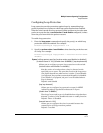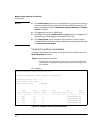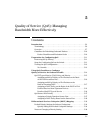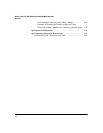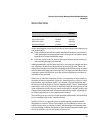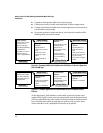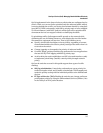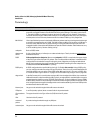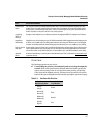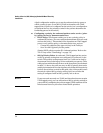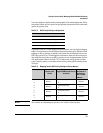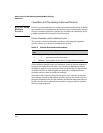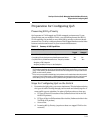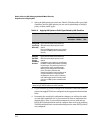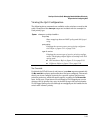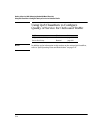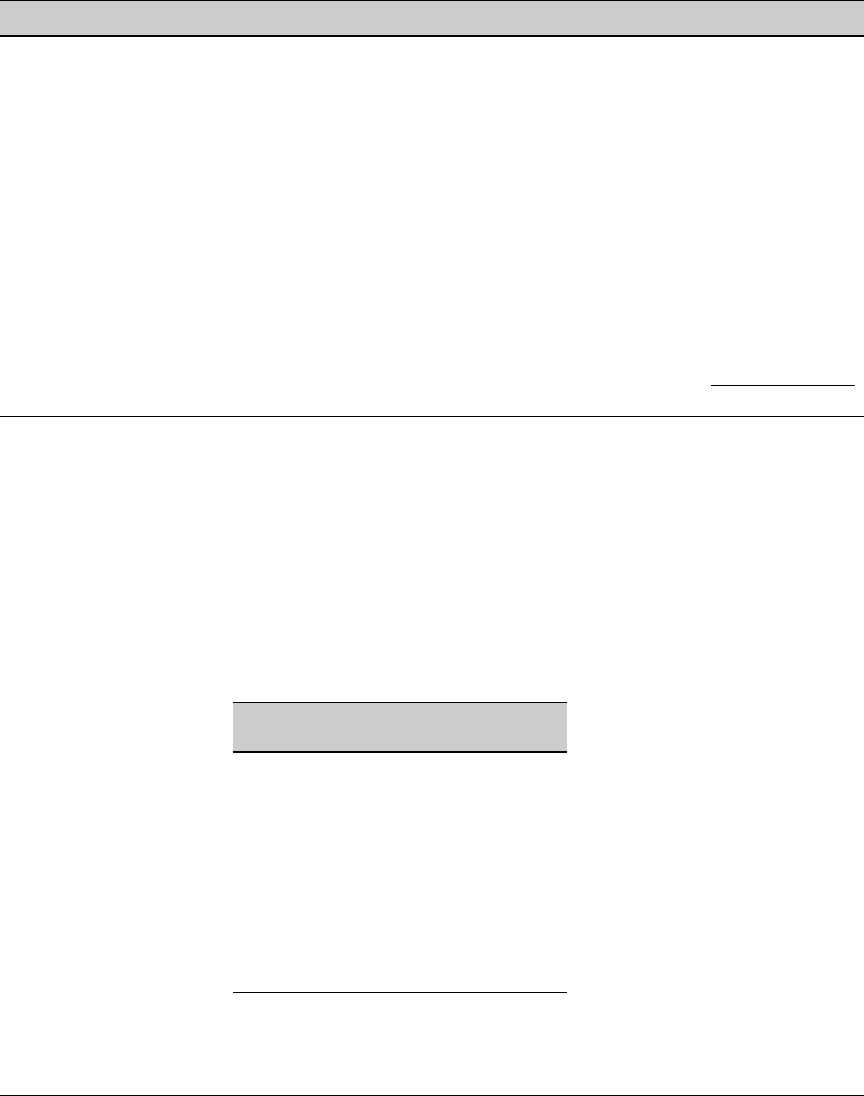
5-7
Quality of Service (QoS): Managing Bandwidth More Effectively
Introduction
Overview
QoS settings operate on two levels:
■ Controlling the priority of outbound packets moving through the
switch: Each switch port has four shared outbound traffic queues; the
queue with a priority value of one has the lowest priority, and priority
value four has the highest priority. Packets leave the switch port on the
basis of their queue assignment and whether any higher queues are empty:
Table 5-1. Port Queue Exit Priorities
outbound port
queue
For any port, a buffer that holds outbound traffic until it can leave the switch through that port. By
default, there are eight outbound queues for each port in the switch. Queue 8 is the highest priority
queue; queue 1 is the lowest priority queue. Traffic in a port’s high priority queue leaves the switch
before any traffic in the port’s medium or low priority queues.
re-marking
(DSCP re-
marking)
Assigns a new QoS policy to an outbound packet by changing the DSCP bit settings in the ToS byte.
tagged port
membership
Identifies a port as belonging to a specific VLAN and enables VLAN-tagged packets belonging to that
VLAN to carry an 802.1p priority setting when outbound from that port. Where a port is an untagged
member of a VLAN, outbound packets belonging to that VLAN do not carry an 802.1p priority setting.
Type-of-Service
(ToS) byte
Comprised of a three-bit (high-order) precedence field and a five-bit (low-order) Type-of-Service field.
Later implementations may use this byte as a six-bit (high-order) Differentiated Services field and a
two-bit (low-order) reserved field. See also “IP-precedence bits” and DSCP elsewhere in this table.
upstream
device
A device linked directly or indirectly to an inbound switch port. That is, the switch receives traffic from
upstream devices.
Term Use in This Document
Port Queue and
802.1p Priority Values
Priority for Exiting
From the Port
Low (1)
Fourth
Low (2)
Normal (0)
Third
Normal (3)
Medium (4)
Second
Medium (5)
High (6)
First
High (7)



